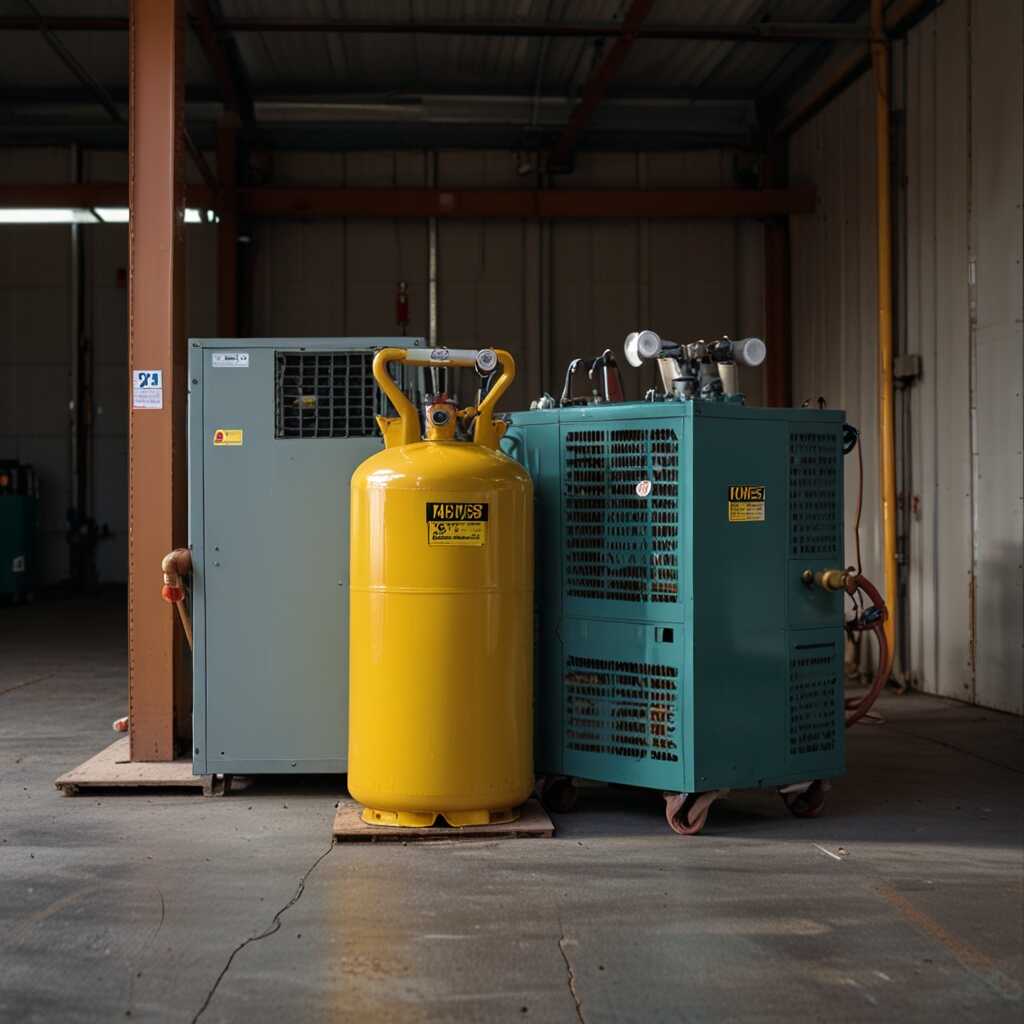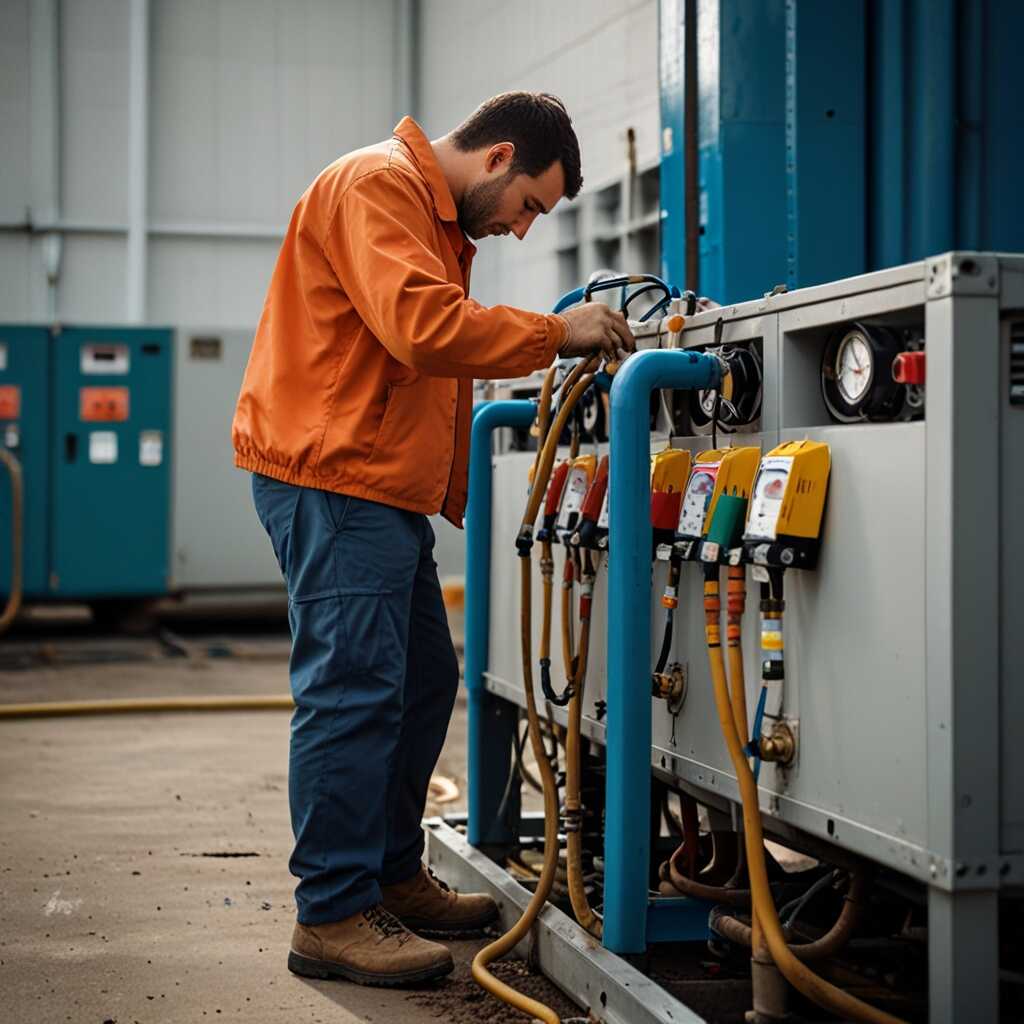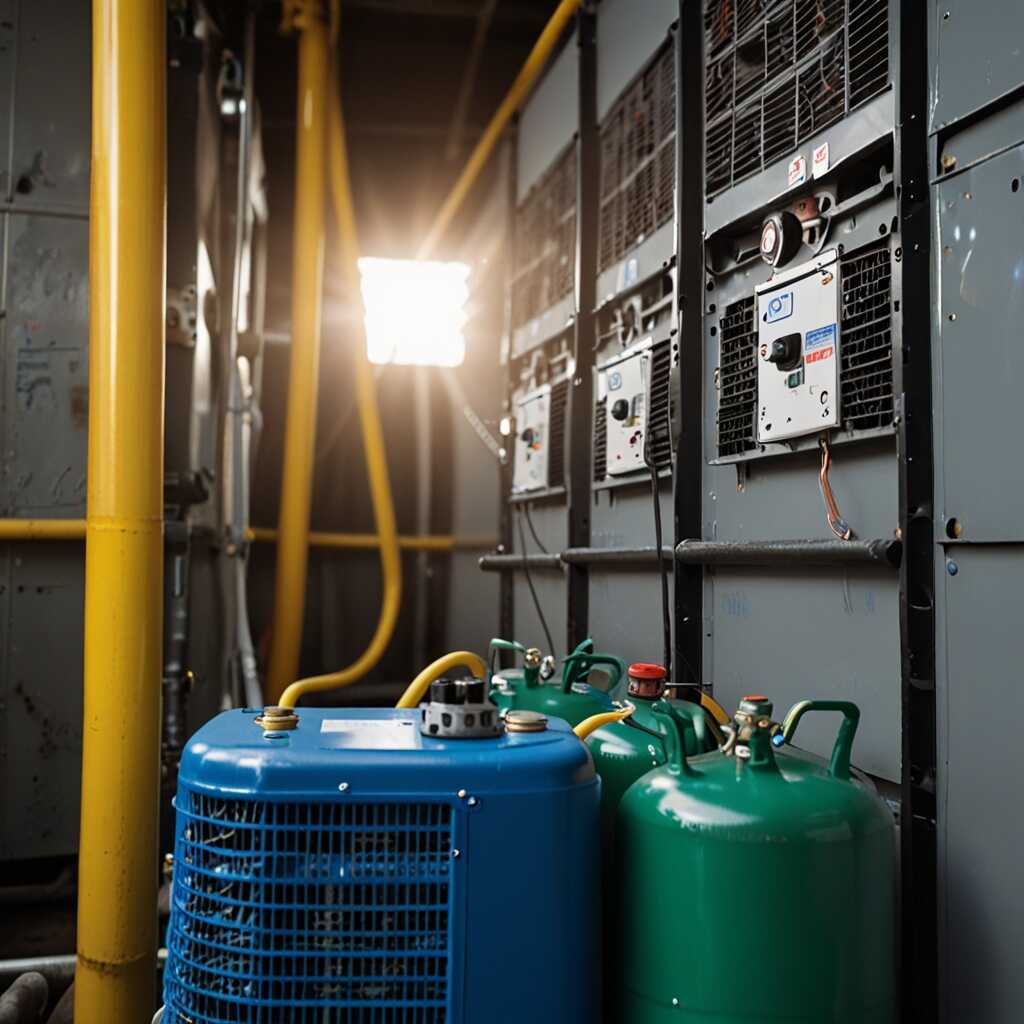Properly calibrated refrigerant recovery machines significantly reduce gas loss during the transfer process. Accurate calibration ensures optimal efficiency, minimizing waste and enhancing environmental compliance. Refrigerant Recovery Pro guides HVAC professionals in achieving these results with expert advice and practical best practices. This article will explore effective techniques to optimize refrigerant management and improve recovery performance.
How Refrigerant Recovery Machines Function Effectively
Refrigerant recovery machines operate by utilizing a set of essential components to efficiently remove refrigerants from HVAC systems. These components include a compressor, condenser, receiver, and expansion valve. The compressor creates a vacuum, allowing refrigerant to flow from the system into the machine. Proper calibration helps enhance the machine’s efficiency, significantly reducing gas loss during the process. Testing and maintaining the operational reliability of these machines ensures that they function correctly, which is vital for successful refrigerant management.
Key Components of Refrigerant Recovery Machines
The key components of refrigerant recovery machines include the compressor, which generates the necessary pressure for refrigerant flow. The condenser cools and transitions the refrigerant from gas to liquid form. The receiver stores the recovered refrigerant until it can be properly recycled. Each component must work seamlessly to maintain high recovery performance. Regular reviews and comparisons of these components help HVAC technicians choose the best equipment, ensuring optimal gas loss reduction while maximizing efficiency and reliability.
Why Calibration Matters for Refrigerant Efficiency
Accurate calibration is necessary for refrigerant recovery machines to reduce refrigerant gas loss. Calibration ensures the machine operates at peak performance, enabling effective refrigerant management and compliance with environmental standards. Inaccurate calibration can lead to increased gas loss, affecting both efficiency and regulatory compliance. It can also result in poor performance and increased operational costs. Regular calibration is essential to maintain these machines, enhancing their reliability and overall efficiency.
Understanding the Calibration Process for Refrigerant Recovery Machines
The calibration process for refrigerant recovery machines involves specific procedures and testing to ensure accurate measurements. Technicians should follow manufacturer guidelines to effectively calibrate the machines. Regular testing enhances the machine’s reliability in transferring refrigerants. It is recommended to calibrate these machines at least once a year. This helps to ensure they can handle different types of refrigerants effectively. Keeping records of calibration results not only aids in regulatory compliance but also improves operational efficiency. Using calibrated equipment helps HVAC professionals achieve excellent performance while minimizing environmental impacts.

Identifying Common Calibration Mistakes
Common calibration mistakes with refrigerant recovery machines include failing to check for leaks, improper pressure settings, and overlooking temperature adjustments. These errors can significantly affect recovery efficiency. When machines are incorrectly calibrated, they can lead to substantial gas loss during transfers. Regularly testing the machine’s performance against standard benchmarks ensures reliability. For instance, a well-calibrated machine prevents up to 15% gas loss, whereas miscalibrated tools can result in losses exceeding 25%. HVAC professionals can enhance recovery efficiency by identifying and correcting these calibration errors.
Calibration Testing Methods for Improved Performance
Calibration testing methods are essential for improving the performance of refrigerant recovery machines. These methods include routine checks of pressure gauges and temperature settings. Technicians should compare machine readings against industry benchmarks. Using calibrated gauges ensures accuracy and minimizes discrepancies. Regular assessments help identify issues early, allowing for timely repairs. This proactive approach not only enhances reliability but also extends the service life of the equipment. Implementing these HVAC best practices can lead to significant improvements in refrigerant recovery efficiency and performance.
Key Numerical Data on Gas Management
- 85% of refrigerants can be recovered with proper techniques.
- Up to 90% efficiency is achievable in refrigerant recovery processes.
- A 10% increase in recovery machine accuracy can reduce gas loss significantly.
- Properly calibrated machines cost about 15-20% more than basic models.
- Three common types of refrigerants include R-410A, R-22, and R-134a.
- Every year, HVAC systems can emit hundreds of tons of refrigerants if not managed properly.
- A machine’s gauge accuracy is crucial for successful recovery operations.

Industry Standards for Effective Refrigerant Recovery
Key industry standards for effective refrigerant recovery include regularly checking refrigerant recovery equipment for reliability. Proper calibration ensures that the machines operate efficiently, minimizing gas loss. Best practices in refrigerant management involve following manufacturer guidelines and local regulations regarding refrigerant types. Different refrigerant types can impact recovery procedures. For example, R-410A and R-22 have specific requirements for recovery due to their unique physical and chemical properties. The ideal recovery rate for most refrigerants is about 0.5 to 0.7 lbs/min, providing optimal efficiency for HVAC systems.
Best Practices in Refrigerant Management
Best practices in refrigerant management ensure reliability and efficiency during recovery. Always use properly calibrated recovery machines designed for specific refrigerant types. The equipment must undergo regular testing to maintain its performance. Understanding the properties of different refrigerants can help technicians determine the right approach for each job. Following established guidelines enhances the quality of the recovery process, prevents loss, and promotes environmental compliance. Educating staff on these practices is essential to improving overall refrigerant management efforts.

Emerging Technologies in Refrigerant Recovery
Advancements in refrigerant recovery technology focus on improving efficiency and reliability. Key advancements include smart recovery machines designed to minimize gas loss, enhanced sensors for accurate measurements, and systems that streamline the transfer process. Companies like Danfoss, Yellow Jacket, and Appion lead in this sector, developing innovative refrigerant solutions. Properly calibrated machines can reduce refrigerant loss during recovery by up to 15%, ensuring environmental compliance and improving overall HVAC system performance.
Smart Refrigerant Recovery Machines
Smart refrigerant recovery machines incorporate intelligent features that enhance performance and efficiency. These machines utilize advanced sensors to monitor refrigerant levels and optimize recovery speeds. They provide real-time data on recovery progress and can handle multiple types of refrigerants, including R-410A and R-134a. The ability to calibrate these machines easily helps ensure minimal loss during the recovery process. Investing in these cutting-edge machines can lead to better regulatory compliance and lower costs by preventing refrigerant waste.
Advantages of Accurate Refrigerant Handling
- Minimized environmental impact through reduced gas emissions.
- Improved efficiency boosts recovery speed and effectiveness.
- Enhanced compliance with regulatory standards for refrigerant use.
- Properly calibrated machines lead to lower operational costs.
- Greater reliability results from accurate measurements and reduced errors.
- Reduced need for frequent equipment maintenance or replacement.
- Techs gain confidence in their recovery methods, enhancing job performance.

Impact of Regulations on Refrigerant Recovery Practices
The key regulations governing refrigerant recovery practices include the Clean Air Act and the EPA’s Section 608. These laws ensure HVAC professionals adhere to best practices, limiting refrigerant emissions. Compliance with these regulations is essential for HVAC technicians as it helps create a more sustainable environment. Insights derived from recent research indicate that the implementation of these regulations could lead to a significant reduction in gas emissions by 2025.
Understanding EPA’s Section 608 Requirements
EPA’s Section 608 requires HVAC professionals to properly recover refrigerants during service and disposal. It offers guidance on certifications and testing which ensure the reliability of recovery methods. Technicians must be trained and certified to handle various refrigerants safely, aligning with stringent standards. This enhances efficiency across the industry, delivering great reliability in refrigerant management practices. Compliance with these requirements not only supports environmental goals but also helps HVAC businesses improve overall performance.
Positive Environmental Impacts of Effective Gas Management
Reducing refrigerant gas loss supports environmental conservation by minimizing greenhouse gas emissions. Refrigerants are potent contributors to climate change when released into the atmosphere. Responsible refrigerant management practices help HVAC professionals lower their carbon footprint. Implementing effective recovery techniques ensures that less refrigerant escapes during maintenance or replacement. This is crucial for preventing environmental harm and promoting sustainable practices. According to research, approximately 30% of refrigerants can leak into the atmosphere if not properly managed. These efforts not only benefit the environment but also enhance HVAC efficiency improvements.
Key Practices for Effective Refrigerant Management
Key practices in effective refrigerant management include regularly testing and calibrating recovery machines. HVAC professionals should ensure that their recovery equipment is designed to minimize leaks. Proper maintenance and regular reviews of equipment enhance reliability. Training and education on responsible refrigerant disposal are essential for technicians. Utilizing EPA-approved methods for refrigerant retrieval helps achieve compliance. By following these practices, businesses can reduce their environmental impact while ensuring efficient performance, thereby contributing positively to long-term sustainability.
Comparison of Brands in Refrigerant Recovery
- Brand A is known for durability but may be more expensive upfront.
- Brand B offers budget-friendly options but has mixed reviews on longevity.
- Brand C excels in efficiency but can lack versatility across different refrigerants.
- Brand D provides a balance of cost and performance, gaining popularity among technicians.
- New technicians often gravitate towards affordable brands due to budget constraints.
- Experienced techs prefer advanced models for better efficiency and lower losses.
- Compliance officers appreciate brands that emphasize environmental standards.
Supportive Resources for Continuous Learning
This section provides essential links to reliable resources for continuous education on refrigerant recovery. Users can find various guides and technical support through Refrigerant Recovery Pro, focusing on best practices, machine efficiency reviews, and industry standards. Reliable resources include technical documentation, webinars, and training programs that enhance HVAC professionals’ knowledge. The comparison of different refrigerant recovery machines helps users understand which equipments are best suited for their needs. For example, while some machines can handle high-pressure systems easily, others may offer better energy efficiency. The expected lifespan of a well-maintained recovery machine generally ranges from 5 to 10 years, depending on usage and care. This data assists technicians in making informed decisions about equipment investment.
Comparing Features of Refrigerant Recovery Machines
When comparing refrigerant recovery machines, focus on key features that enhance performance. High-quality machines offer impressive data processing capabilities, making them reliable for various tasks. Look for durable designs that can withstand rigorous testing and operational demands. For instance, some machines have built-in recovery efficiency monitors that provide real-time performance metrics. This feature helps HVAC technicians make quick adjustments to enhance efficiency during recovery operations. Understand the importance of user-friendly interfaces, which simplify operation and training, promoting continual learning. Consider reputable brands renowned for quality assurance and customer satisfaction, as their products tend to deliver great results and durability.